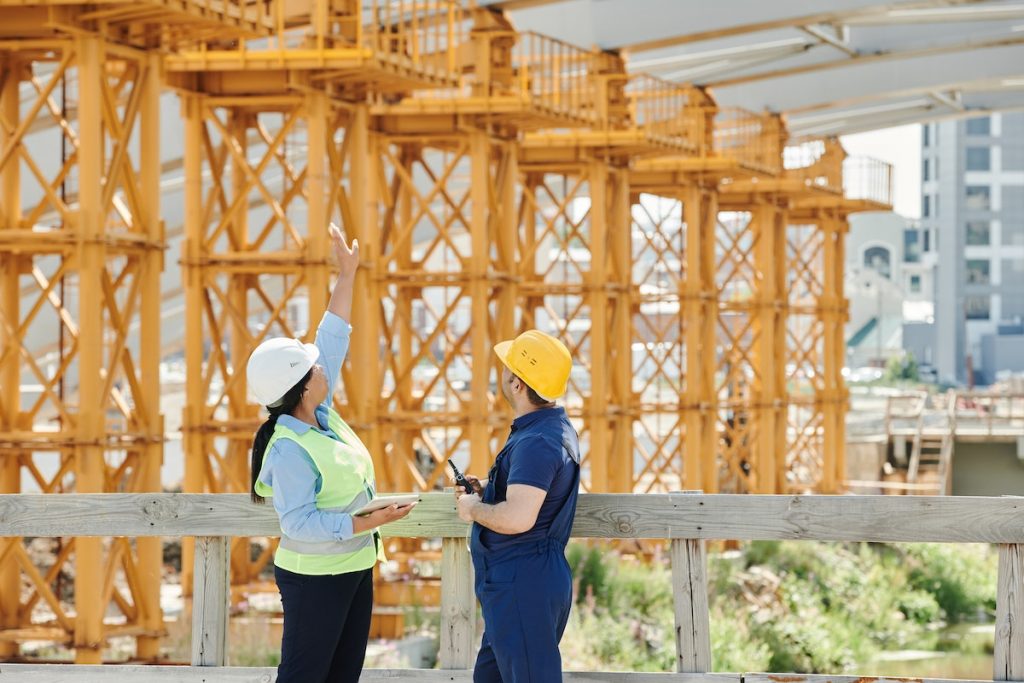• Develop a comprehensive safety plan that covers potential hazards and outlines responsible parties for enforcing the guidelines.
• Provide safety training to personnel involved, including refresher courses and passing the CITB Health, Safety, and Environment Test.
• Implement proper safety protocols such as marked exits and entrances, using protective equipment, and no smoking policies.
• Conduct regular maintenance checks on equipment to ensure they are in good condition and operated by trained personnel.
Construction projects often involve complex tasks that can be hazardous to those working. It’s important to take all necessary steps to ensure the safety of everyone involved in the project, from workers to visitors. Focusing on health, safety, and the environment (HSE) can help ensure the project is completed without accidents or injuries. You can take several measures to ensure these measures are enforced during the project.
Develop a Comprehensive Safety Plan
The first step towards ensuring safety on your construction project is to create a comprehensive safety plan. This plan should include specific guidelines for workplace safety and outline any potential hazards that could arise during the project. It should also include a list of people responsible for enforcing these guidelines and ensuring they are followed at all times.
Potential Hazards
Potential hazards are an important factor to consider when developing a safety plan. It’s important to identify any potential hazards that could occur during the project and develop strategies for minimizing or eliminating these risks. Examples of potential hazards include the following:
- Electrical and fire hazards
- Slips, trips, and falls
- Exposure to hazardous materials
- Unsafe machinery or tools
People Enforcing the Guidelines
Part of making a comprehensive plan is also making sure that someone is responsible for enforcing the safety guidelines. This could include a health and safety officer, supervisors, or other personnel responsible for ensuring compliance with the plan. Depending on the project’s size, multiple people may be assigned to ensure everyone follows the rules. This includes the following people:
- Health and Safety Officers: Responsible for monitoring the project’s safety, ensuring safety protocols are followed and any potential hazards are addressed.
- Supervisors: They oversee the work and ensure that all workers follow safety guidelines.
- Contractors: Ensures that all subcontractors follow safety protocols and report potential hazards.

Provide Safety Training
Another important part of maintaining safe practices on your construction project is providing adequate safety training for workers and other personnel involved. This includes teaching them about proper equipment usage, proper lifting techniques, and other regulations that must be followed to remain safe throughout the job. Additionally, it’s important to provide refresher courses throughout the year so that everyone remains up-to-date on any new regulations or developments in safety protocol.
CITB Test
Part of providing safety training is also having workers and other personnel pass the CITB Health, Safety, and Environment (HSE) Test. This test is designed to assess one’s understanding of health, safety, and environmental principles to ensure they are qualified to work on construction projects. The test covers risk assessment, construction regulations, hazard management, and more. You can book a CITB test online to ensure that all personnel involved in the project have the necessary qualifications.
Implement Proper Safety Protocols
It’s important to put into practice proper safety protocols onsite at all times. This means having marked exits and entrances, ensuring all areas are kept clean and tidy, enforcing no-smoking policies, and installing security cameras if necessary. Additionally, it’s important to ensure that all workers have access to protective gear such as hard hats, steel-toed boots, eye protection, etc. Any other tools or equipment required for their job duties safely and securely.
Other Regulations
Adherence to any local regulations and laws regarding construction projects is important. This includes following building codes or regulations governing how the project must be handled in terms of safety and security. It’s also important to ensure that all personnel on site are properly licensed and insured as required by law.

Equipment Maintenance
Proper equipment maintenance is also essential to ensure that workers are safe. Making sure that all machinery and tools are maintained regularly can help reduce the risk of accidents or injuries. This includes checking for the following:
- Proper lubrication
- Worn-out parts or components
- Broken connections
- Electrical problems
These checks should be done regularly to ensure the equipment is in good condition and ready for use. Additionally, ensure that the equipment is operated by people who are properly trained and knowledgeable about its usage. People with the proper training and certification must only use machines and equipment such as forklifts, cranes, and compressors.
A construction project is complex, and safety should always be the top priority. Implementing effective safety strategies, providing adequate training, and conducting regular equipment maintenance can help ensure that all personnel involved in the project remain safe throughout its duration. You can complete your construction project by being mindful of potential hazards and ensuring all necessary steps are taken to minimize them.

